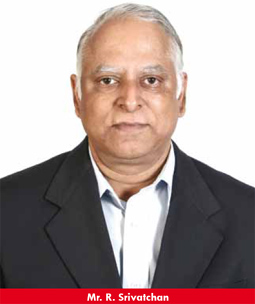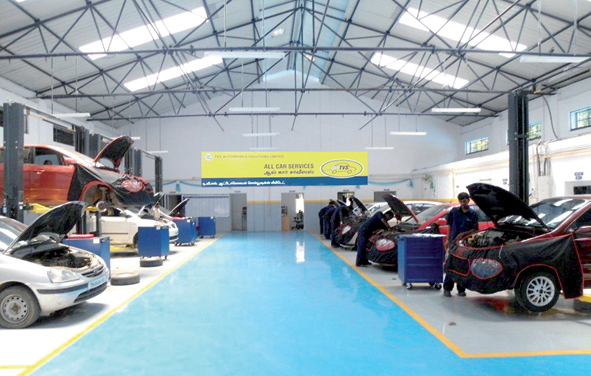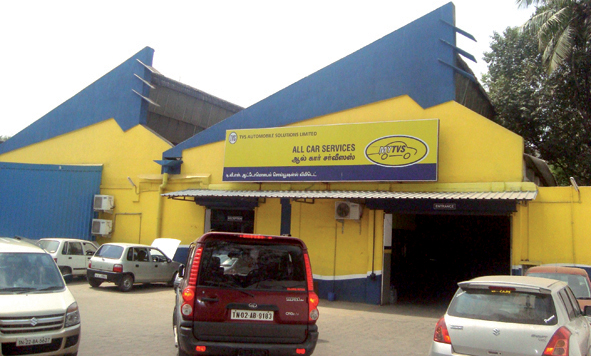By R. Srivatchan, President, TVS Automobile Solutions Ltd.
 With close to two decades of experience in the automobile industry as a professional and as a car user, I believe that the changing landscape of garages, the equipment they use, their customer interaction and skill set of employees is analogous to the changing economic and social environment in India.
With close to two decades of experience in the automobile industry as a professional and as a car user, I believe that the changing landscape of garages, the equipment they use, their customer interaction and skill set of employees is analogous to the changing economic and social environment in India.
Taking out a page from history we all know that we do not have to depend on only a few models of cars to choose from. We today have around 40 models to choose from. Theoretically there are over 200 but I am talking only of those that are current.
Such model crowding has made many people’s lives complex while simplifying the customers’ lives. It has also given rise to a host of other challenges. These forces have given rise to two significant factors – changing customer attitudes and expectations and growing car population and variety. Combined together and interacting with each other, these drivers have effected significant changes in workshops, garage equipment and the skill requirement of technicians.
I owned a big elephant ‘Ambassador’. I used to take my car for engine tuning every two months to a self-proclaimed expert mechanic. The workshop was around 12 km from the place I stayed in. The approach road to that shop was littered with mud, garbage and pot-holes. Most of today’s modern sleek cars do not provide as much of ground clearance to drive through them. On reaching the spot, I would silently wait for the expert’s attention for 15-30 minutes, request him for a service, make him recount all the innumerable visits that I have made and prove myself to be a loyal customer. I always used to wonder: will the situation always be like this?
With the opening up of the economy in the 1990s, every possible brand of automobile entered the Indian market. Their swanky and up-market design cars could be seen on city roads. Showrooms and service set-ups were revamped and job opportunities in the automobile sector widened. These were a paradigm shift for car consumers. We jumped from being submissive to being aggressive and at times peeve.
Customers are maturing, buying more of C segment and SUV cars, looking for more subtle differentiations and are getting refined. At the same time they have started questioning everything – prices, service standards, soft service qualities, and so on. They are able to see functional aspects of cars distinct from other frills, and as the products become more or less the same they only see the quality in each.
Today customers do differentiate on service quality and are willing to notice it and pay a premium for the same.
 While on the customer attitude front substantial shifts are taking place, the booming automotive sector also gave rise to a burgeoning network of service centres. While the good old Premier Padminis and bulky Ambassadors were often found at roadside mechanic joints, a modern automobile, being a far more sophisticated machine, needs an equally sophisticated set of equipment to service. And the customers want their cars to be serviced in good workshops.
While on the customer attitude front substantial shifts are taking place, the booming automotive sector also gave rise to a burgeoning network of service centres. While the good old Premier Padminis and bulky Ambassadors were often found at roadside mechanic joints, a modern automobile, being a far more sophisticated machine, needs an equally sophisticated set of equipment to service. And the customers want their cars to be serviced in good workshops.
The location of the service centres, the cleanliness of the workshop, the professionalism and attire of the workmen, timeliness of the service and the equipment that are being used to diagnose or repair the vehicles have all become a must for workshops. All this is indicated in the penetration of auto service equipment which has reached a decent level though far below the international level.
Garages have started coming up in main streets. They have a wider frontage, present a bold and good look, and are airy and epoxy-floored. With a reception area they provide water when someone comes in, sport a TV that beams channel programs, whether there is a person in the lounge or not, and are a “service advisor” who is well dressed and technically competent.
Today, even independent repair shopowners are ready to invest in modern machinery and diagnostic tools. This behavioural change is not only to achieve parity with other workshops but their belief that it pays to invest in these. Right from the wheel aligner, balancer, body repair system, MIG welder, dent puller, special tools to paint booths, you will find them all. They talk about productivity matrix, bay turn, multi-skilled workers, customer satisfaction and all such words which once used to be the copyright for dealership workshops. And if all is so good, then this must be the best business plan to invest in for any entrepreneur and make money.
Parts used to be a bug bear. Customers were led to believe that they would get good and genuine parts only with authorised workshops. It is no longer true. As the markets disperse, so also parts distribution. Today’s article on Competition Commission of India’s report says that the parts of majority of the car makes are available freely. Car manufacturers know that they cannot remain silent and without catering to the ever-growing aftermarket. For them, the choice is to supply to it or forget that market in the long run. Mature makers have realised the inevitable and are supplying parts to all markets. The restrictions are limited to a very few manufacturers who do not command much market share individually.
Reflecting such shifts, the Automobile Component Manufacturers’ Association (ACMA) is taking the lead and organising a trade expo in Delhi for aftermarket needs. This is the first time ACMA is taking a lead different from the Society of Indian Automobile Manufacturers (SIAM). We can see a subtle power balance getting restored.
 Aftermarket and independent aftermarket service will all become a major force to reckon with in the current decade.
Aftermarket and independent aftermarket service will all become a major force to reckon with in the current decade.
As with any sector, this business also has its own challenges and nuances. Workshops built in tier-2 and tier-3 cities, at an investment of Rs. 10 lakhs each, with basic equipment, break even in four to five months. At the same time, you have a host of workshops in metro cities that are located at prime junctions, with heavy investments made in modern machinery and struggling to make profit even after two-three years of operation. Why is it so? This anomaly has several questions within it. It makes me stop and wonder that probably there is still a lot of ground that needs to be covered in terms of market expectations and service centres delivery. There are problems which are peculiar to this industry. From my experience, I could jot down the following few:
- The customer has to be delivered what is being promised. If he has come for service he should not be allowed to leave with the feeling that his car has been given a good wash.
- Procuring costly equipment will not serve any purpose until service advisors know where and how it has to be used. Productivity can be enhanced only if the potential of the employees and also the equipment is tapped to the fullest extent. Besides, substantial thrust has to be put on training.
- Original diagnostic tools and repair equipment should be available at affordable prices. The workshops should have access to quality information on how to use them effectively. Particularly garage technicians need to become adept at electronics tools usage.
- Well, the above point will not only require investments in terms of manufacturing them in India but also certain legislative or policy changes that makes this manufacturing market lucrative. Not only will it bring in better service but would also generate larger revenue and skilled/semi-skilled jobs for States.
- Repair needs to be carried out only when it is necessary. Customer has every right to manage with the same parts being repaired till the time it does not raise a safety threat or environment concern. More importantly, he should have visibility on what he is being charged for.
- Though some time it is required for right reasons, replacements also being carried too far and is inviting suspicion. There is a distrust developing; and regulator is taking note and it is not long far that there will be restrictions.
- Garages should only do necessary repairs. They should not use safety and reliability as veils to push parts and carry out costly labor charges.
- Vehicle manufacturers have to come forward in terms of making electronic catalogues & manuals accessible to all. Keeping these privy and leveraging the lack of information availability in ensuring customer loyalty is detrimental to the free market philosophy.
With Indian vehicle population growing and aspirations of millions of people driving this growth the service workshop market is all set for an explosive growth. There is scope for everyone to benefit from it, be it customers, labourers, workers, executives, government (excise from manufacturing), SMEs, exporters/traders and OEMs.